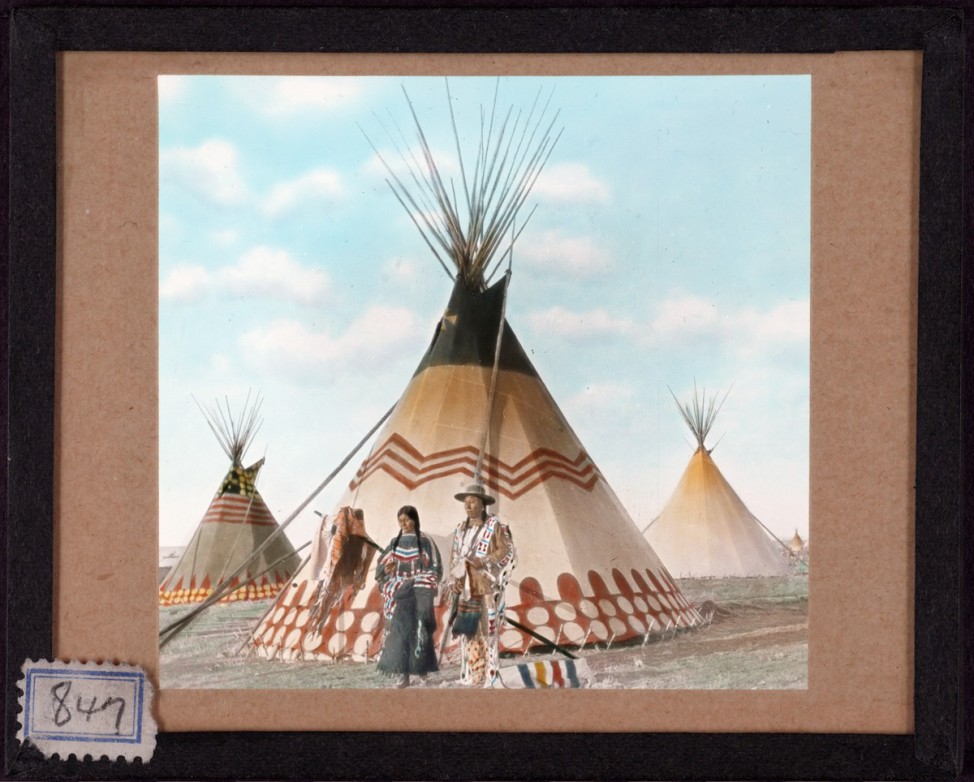
Hand-painted lantern slide by photographer Walter McClintock (1870-1949) of the Blackfoot Indians of Montana. (Yale Collection of Western Americana, Beinecke Rare Book and Manuscript Library)
The son of a wealthy Pittsburgh carpetmaker, Walter McClintock became entranced by the American West after traveling there in 1895 to recover from a serious case of typhoid fever.
In 1896, he traveled West again as a photographer for a federal commission investigating national forests. While there, he came into contact with the Blackfoot community in northwestern Montana and began a life-long interest in them.
Over the next 20 years, the Yale graduate took several thousand photographs of the Blackfoot Indians — a name thought to have been acquired because of the black color of their moccasins, which were painted or darkened with ashes — and their culture.
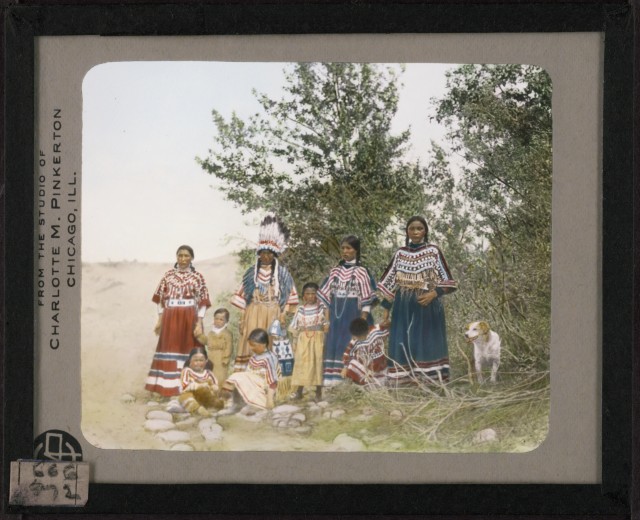
Hand-painted lantern slide by photographer Walter McClintock (1870-1949) of the Blackfoot Indians of Montana. (Yale Collection of Western Americana, Beinecke Rare Book and Manuscript Library)
McClintock believed Indian communities were undergoing rapid, dramatic change. Fearful that their traditional culture would be lost, he wanted a record their way of life before it completely disappeared.
He wrote books and gave lectures based upon his experiences interacting with the Blackfoot people.
One of McClintock’s favorite images was of a Blackfoot lodge glowing from within, “emanating a warm, radiant incandescence”, according to author and historian Sherry L. Smith, who says the photographer “tried his best to enter that lodge and explain its interior life to other Americans”.
During the early part of the 1800s, the Blackfoot numbered approximately 20,000 people.
However, ravaged by diseases brought by white settlers, starvation and war, their population was reduced to fewer than 5,000 by the turn of the century.
Today, there are about 16,000 registered Blackfoot Indians living on the Blackfeet Reservation in northwestern Montana along the eastern slopes of the Rocky Mountains.
Below are some hand-colored, transparent glass lantern slides McClintock took around the turn of the century. The originals are housed at Yale University’s Beinecke Rare Book & Manuscript Library.
A lantern slide is a positive print of a photograph on a glass slide that is often hand-painted to be more visually appealing.
In McClintock’s case, the slides also represent an idealized version of a vanishing culture at the dawn of the modern age.
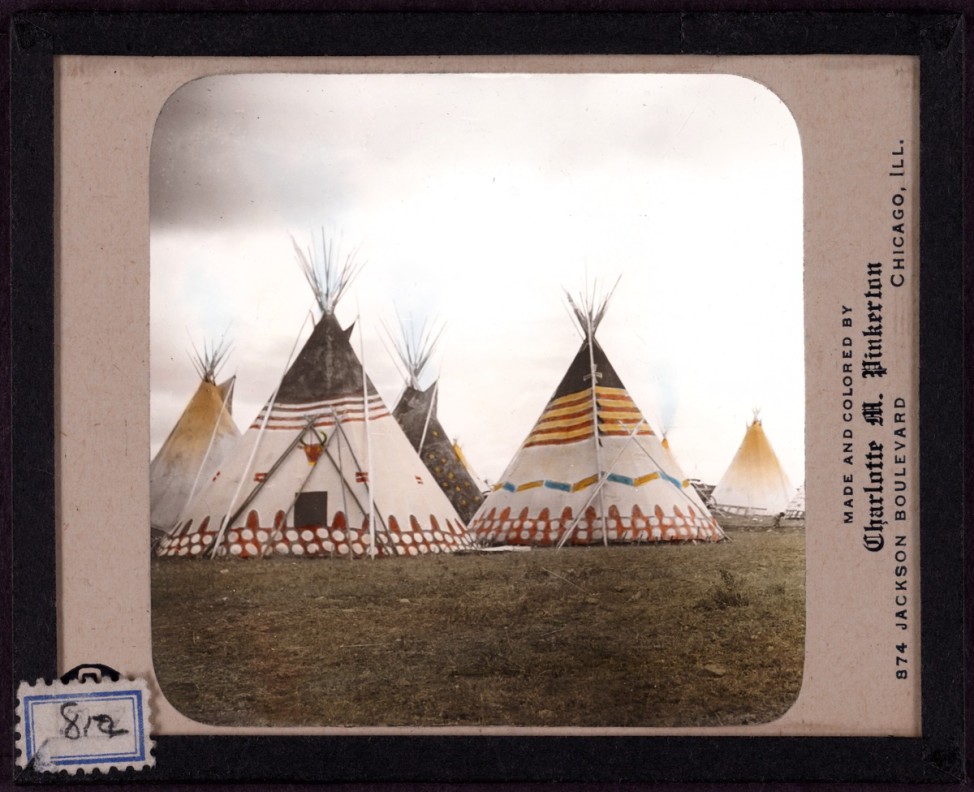
Buffalo teepee on left, Snake teepee on right, Star teepee in back center. Hand-painted lantern slide by photographer Walter McClintock (1870-1949). (Yale Collection of Western Americana, Beinecke Rare Book and Manuscript Library)
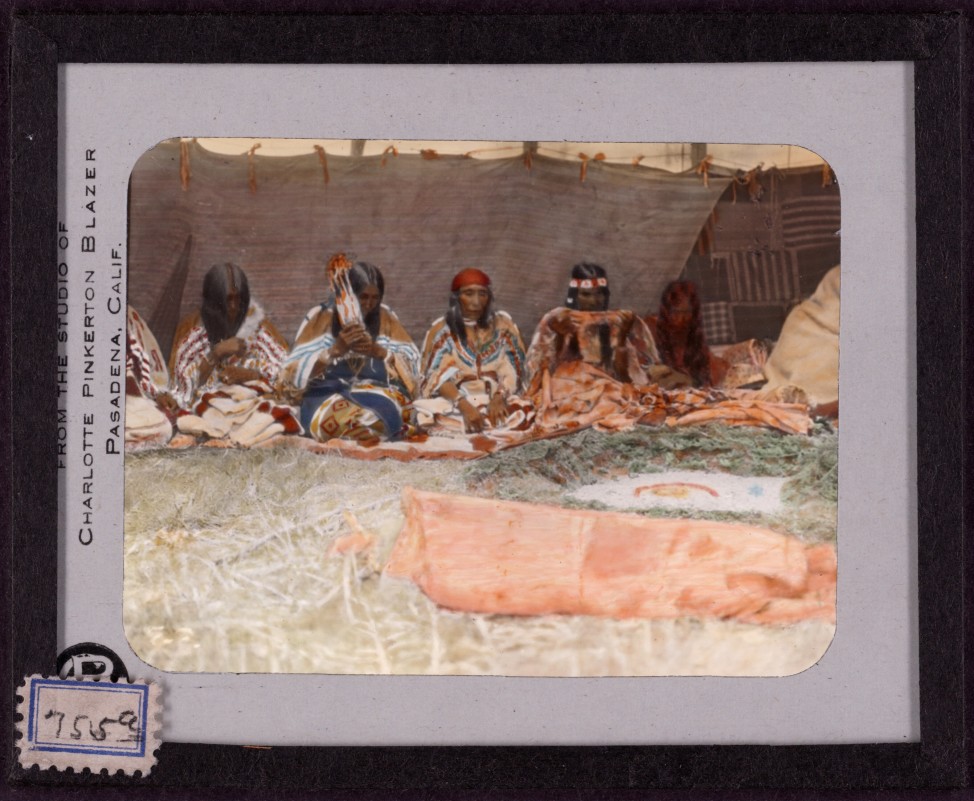
Ceremony of the fasting woman. Hand-painted lantern slide by photographer Walter McClintock (1870-1949) of the Blackfoot Indians of Montana. (Yale Collection of Western Americana, Beinecke Rare Book and Manuscript Library)
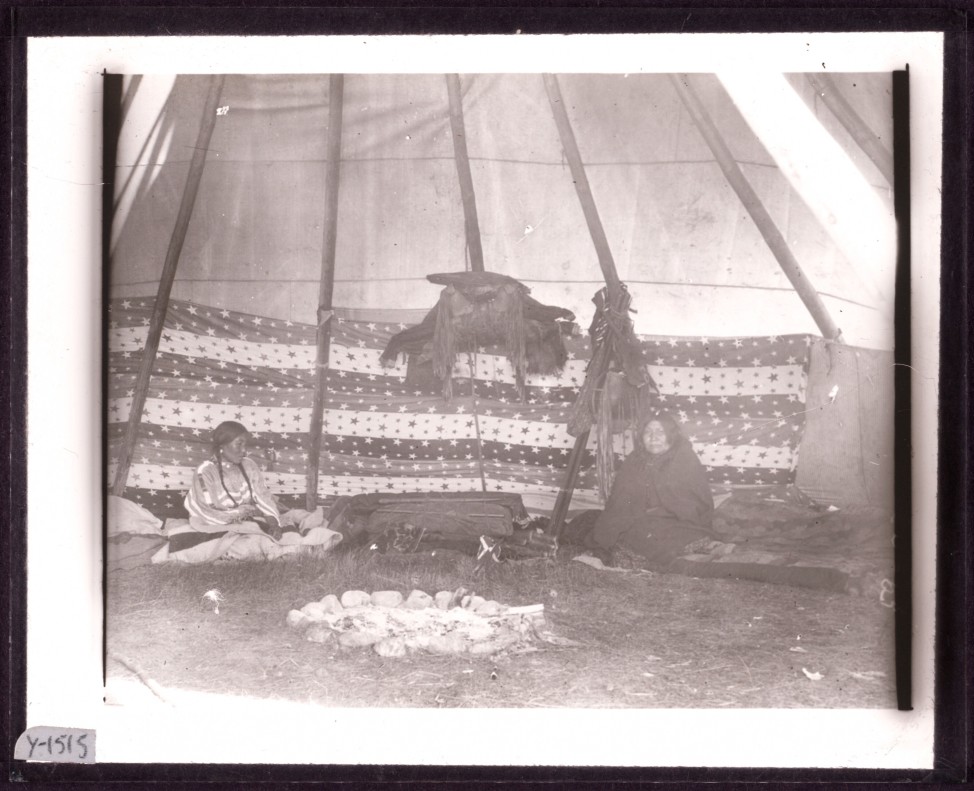
An original, unpainted image of two Blackfoot women inside a teepee in Montana, by photographer Walter McClintock. (Yale Collection of Western Americana, Beinecke Rare Book and Manuscript Library)
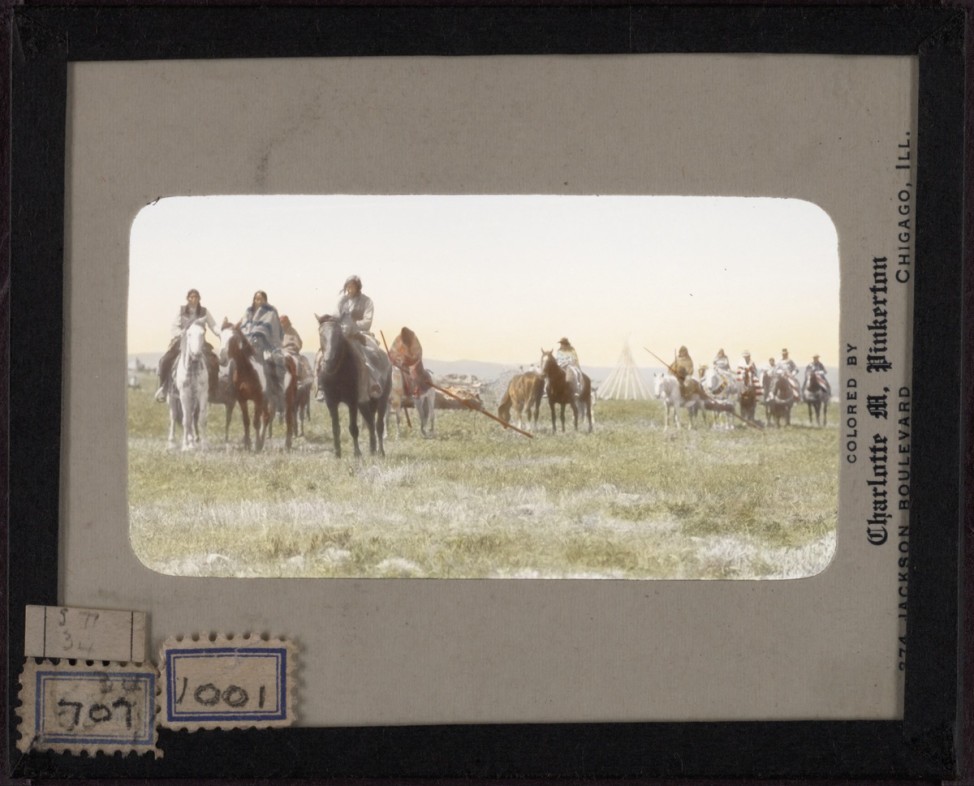
This slide of Indians on horseback in South Piegan, accompanied the lecture entitled, “Dances of the Blackfoot”, given in 1936. Hand-painted lantern slide by photographer Walter McClintock (1870-1949). (Yale Collection of Western Americana, Beinecke Rare Book and Manuscript Library)
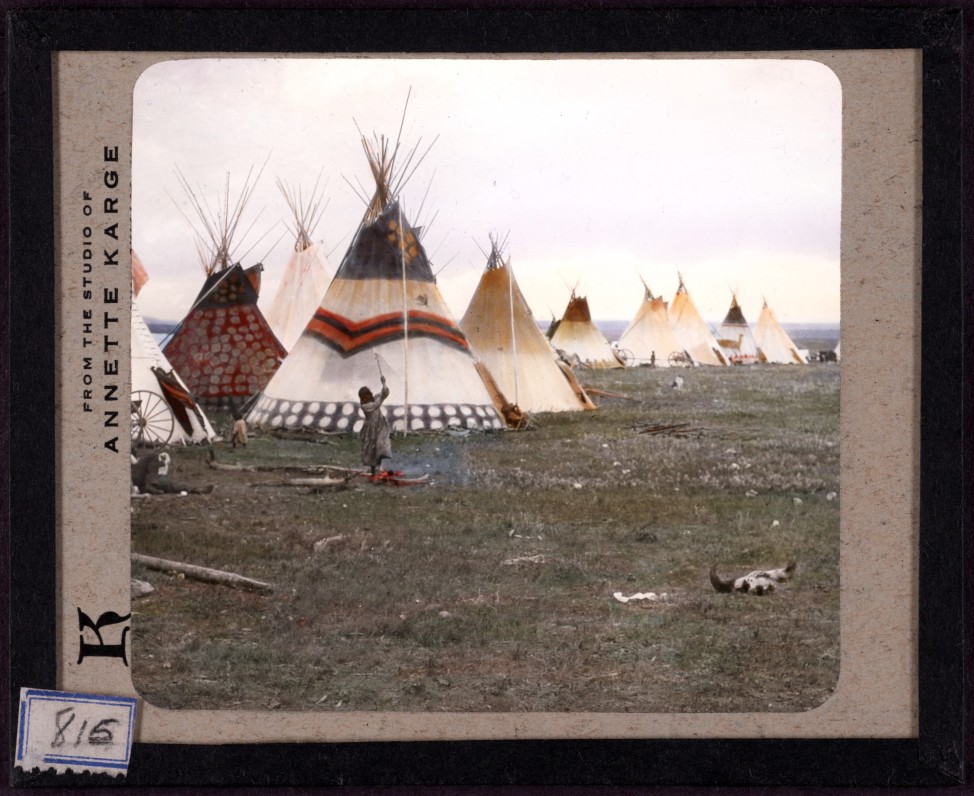
Blackfoot woman chopping firewood, Eagle teepee in foreground, Star teepee on left. Hand-painted lantern slide by photographer Walter McClintock (1870-1949). (Yale Collection of Western Americana, Beinecke Rare Book and Manuscript Library)
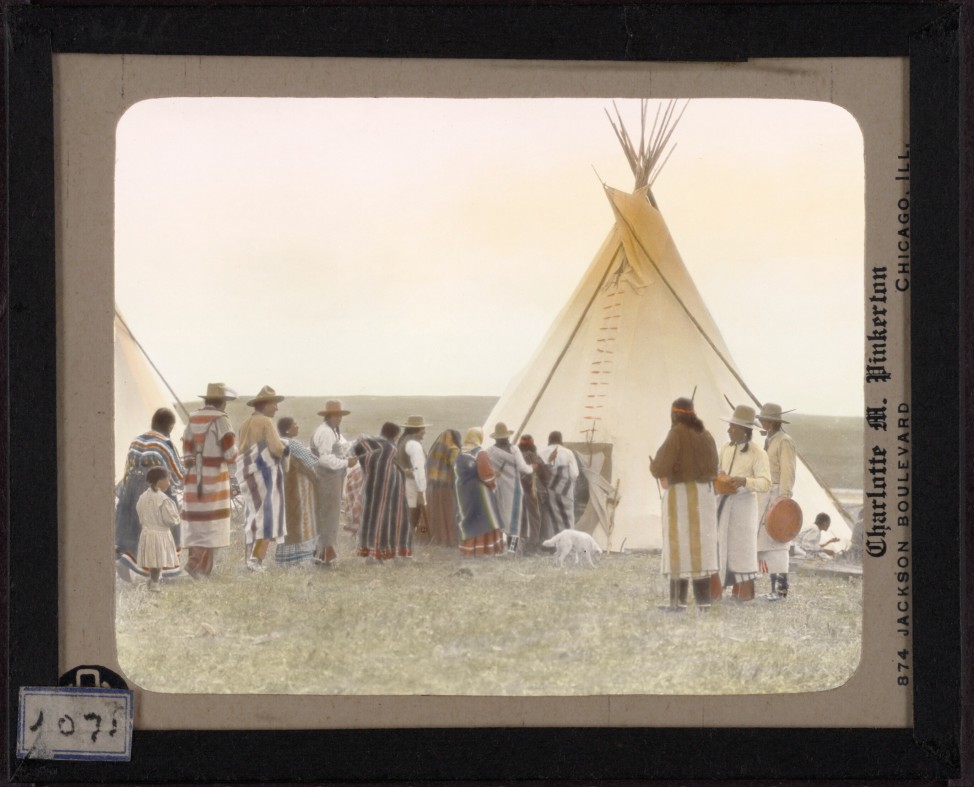
White Grass entering his teepee at the end of the ceremony of the Dancing Pipe, from the lecture, “Dances of the Blackfoot” given in 1936. Hand-painted lantern slide by photographer Walter McClintock (1870-1949) of the Blackfoot Indians of Montana. (Yale Collection of Western Americana, Beinecke Rare Book and Manuscript Library)



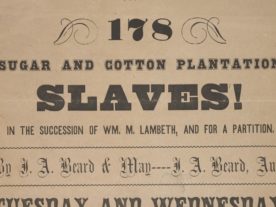





















coolest pictures ever of life Montana’s Native Americans.
When I see the picture of Native of America it recalled me to the real histories of America,it will be right if you can tell us the fact of Native of America,how they are systematically killed by the American Government even today America still have many Law to Suppress them until today, these need to be addressed if America is self proclaimed “Is A Human Right Country”.Please also highlight what America government done to these Native of America over these 200 years,this is the most important issues need to be known by The World.Thank you.
As I posted below, there were reprehensible atrocities on both sides. No one can change history but they can choose to ignore it, deny it, or accept it and try to learn from it so that they don’t make the same mistakes again.
On one hand European settlers would never have survived their initial arrival without the help of Native Americans. They were not prepared to deal with the dangers and other challenges of the vast wilderness they found themselves in. We acknowledge that. We also acknowledge that terrible atrocities were visited on Native Americans by both Europeans such as the British sending them blankets of people who died of smallpox in the hope of infecting them (biological warfare) and later by Americans including by the American government including through military force.
It should be understood that Native Americans were what is called today “hunter gatherers.” To survive they required a lot of land and monopolized what is now the entire United States. In some regions just traversing their land to move west for example was trespassing to them punishable by death. Many were fierce warriors at war not just with the white man but occasionally with each other. As towns and villages sprung up and farms and ranches were built, Native Americans saw this as a threat to their way of life. There were brutal attacks by them and there was a response that could be equally brutal. In the end, the superior military technology of the white man won and Native American tribes were granted reservations which are separate nations that have treaties with the United States government. On their reservations, they are the law. Off their reservations the laws of those governments having jurisdiction, municipalities, states, and the federal government apply.
How Native Americans integrate into the larger American society and how they retain their cultures is to a certain extent up to them. The results have been mixed but usually not nearly as good as we’d like it to be.
In countries that are politically at odds with the US such as China where brutal dictatorships try to monopolize information about the outside world through censorship, they will paint a one sided picture telling only part of the story and therefore completely out of context. It is designed to foster a sense of animosity for America through its relatively short but very complex history and those aspects of its present circumstances that are not favorable. The selective teaching of history even when the facts are substantially true in one way to propagate a lie.
Your tidy reply to his comments was only partially true. It was not that the AMERICAN INDIANS MONOPOLIZED ALL THE LAND. that is almost comical. It is that the settlers found mineral rich areas and propagated, mined, and their GREED dominated the mindset of exterminating INDIANS as a nuisance, obstacle to their constant demand for more land…..for quantum amounts of cattle, gold, silver, etc.
As well , PNCE THEY ENTERED INTO AN AREA, THEY WERE DETERMINED TO RUN OFF OR KILL ALL A.I.
LAWS, BOOKS WITH QUOTES, PRESIDENT JACKSON AMONGST OTHERS ALL REFLECTED THE EXYERMINATION MINDSET OF DOMINATING SETTLERS. WHO CAME HERE FOR RELIGIOUS FREEDOM AND WEALTH. QUICKLY IMPLEMENTING INTOLERANCE TO ANY CULTURE, RELIGION BUT THEIR OWN PROTESTANT, WHITE ONE.
AND AS FAR AS TODAY…”ITS UP TO THEM” YOU NEED TO BE QUIET UNTIL YOU ARE WELL VERSED,ON THE LAWS, BROKEN TREATIES CURRENTLY, and the real obstacles to survival on reservations.
Your uppity, wannabe expert without the knowledge is apparent. Spare US your racist ignorance under guise if logical or fair.
And yes, China is brutal, to Amazon indigenous for mining, logging, to animals, sea life, TIBET, the vulnerable.
But you can’t negate his words as it is truth no matter who speaks it.
Margurite, I think you are badly mistaken. All hunting species including humans that depend on catching and killing their prey to survive are territorial. They patrol their territory, guard it, and attack intruders. It is instinct. The Native Americans were not much different in that regard. Insofar as mining was concerned, conflict with Native Americans was at a time when if it was done at all, it was done with pick and shovel and panning for gold. Land for mining at that time was not an issue. By the time industrial mining using explosives was begun, the conflict was over and the Native Americans had already lost.
The expansion west was treacherous in part because trespassing on land claimed by tribes like the Apaches and Comanches risked attack and death even though the settlers were just passing through. They also saw the construction of railroads as a threat. Most of the towns and villages especially in the west were small and isolated. Even today over a hundred years later, west of the Mississippi the US is almost empty until you get to the West Coast. This is obvious to anyone who has flown over the US in daytime at any latitude and looked out the window of a plane.
Your attempt at political correctness by vilifying the white man’s expansion west to establish the United States of America while ignoring the atrocities committed by Native Americans is laughable, irrelevant, and given how long ago it was could hardly matter less today. Those who care to know realize that many people in native tribes have not integrated well or adapted to the civilization that has been built up around them. They often suffer poverty, alcoholism, and other afflictions disproportionately. We also know that the US government has broken treaties and inflicted atrocities on them as well. Lying about history doesn’t change it and distorting it by trying to skew it to conform to a political agenda only demonstrates that bias refuses to accept the truth that has been well documented.
Exactly
That “American Government” you refer to is us. Or are you just passing through?
Jay, we have a representative democracy which is actually a federal republic. I don’t think anyone ever agrees with everything their government does. Ours is so large and has so many departments, deals with so many problems, projects, issues, that even people in Congress don’t always know what’s going on. Unfortunately for Native Americans, their plight doesn’t get much press. No I am not passing through, I was born here and I’m here to stay. To be blunt, of all the things I worry about this issue is not near the top of my list either.
“I remember the ruts cut in the prarie by hide wagons. Frozen river crossings that are made riskier by overflow, A mother and baby brother crashing through the ice with the team of horses and sliegh carring them. The heroic action of a frontier father in their rescue.”
You must be well over a hundred years old. I don’t know anyone who went west except in cars, buses, trains, planes, and rarely by ship. What you describe was well before my time.
The ruts were on our property. Homesteaded by my father in 1904 two years before Alberta became a province. The Red Cloud memorial marker was located on the Blood indian reservation was just a few miles from my home. The frontier father was mine. I am not over 100 but 80 is pushing it.
Your observation on governmental systems is interesting. We do not have to agree but we will all be tarred by the majority brush. I have often wondered if we might have learned something from the governmental structure of the native communities. Minority views were heard at counsel and if strongly held were free to leave. Some did.
Our constitution recognizes the possibility of the tyranny of the majority but is frequently slow to protect minority rights. You are right. History should teach but revisionists would like to change the message.
Jay, the governance of each Native American tribe was appropriate for a relatively small group of people of a relatively homogenous culture. American society as a whole was far larger, more complex, and heterogeneous than any one individual tribe. The hierarchical structures of the type that were contemporary to Europe, Native Americans, and practically all other societies of the day was not suitable even at that time for harmonious coexistence of such large and diverse cultures. There were so many differences among them, religion for example that had resulted in wars. After independence from the brutal tyranny of the British Crown the last thing the newly independent Americans wanted was to repeat the mistake of creating another hierarchical government structure. The first American government under the Articles of Confederation was a failure because the central government was too weak. The eventual adoption of the Constitution was an arduous process that took a lot of compromise and was an interesting story in itself. The people who created it may have been the greatest assembly of individuals who gave serious thought as to how such diverse people could live together without being at war with each other. But it had one fatal flaw, it did not satisfactorily resolve the issue of slavery. That flaw resulted in the bloodiest conflict in American history.
Consider that in one way Native Americans got their revenge. The peace pipes some of them occasionally smoked was transformed by the white man into a habit forming deadly poison of cigarettes, cigars and pipes all burning tobacco. I’ll bet far more white men died in America from the consequences of using it than the number of Native Americans who were killed by the white man.
As a child I was fascinated by Native Americans. We were just as happy to dress up as Native Americans as cowboys. I had the most stunning headdress my parents built from a kit. It was authentic and very impressive. I loved the Museum of the American Indian and the exhibits of Native Americans at the Museum of Natural History in NYC. We’d go all the time. I couldn’t get enough of it.
The importance of Native Americans to our history and society cannot be overstated. As we know some of it was horrifyingly reprehensible…on both sides. Nevertheless there is a lot we can learn from it even now such as how they lived in harmony with the land and the natural world. They have contributed so much to us most Americans don’t even know about. For example, secret messages in WWII were transmitted in the Native American language Navajo the Nazis could not decipher. I hope their role and culture is still being taught in our public schools as it is so important and interesting. Although relatively small in numbers today, they are an integral part of who and what we are.
Marcus, I like the tone and positivity of your comment.
The life and history of the plains Indian has been glamorized, demonized and generally fabricated. As a boy I sat and listened to elders talk of the first white men they had seen, the devastation of small pox, the general inhumanity present not only toward the native but competition for resources created some horrifying events not chronicled by the brothers keeper stories stories of the frontier. Most have heard of this.
The real heart break is the events visited on the non warrior communittees of the coastal, interior and southern desert. The destruction of the social customs, food sources and way of life. The Europeans(early Americans felt entitled) for if the native could be moved(Fremont)or killed
very few questions were asked.
I have visited the museums and find them interesting but none tell the story as well as an old man wrapped in a buffalo robe or narrative from around a camp fire on a cool California night.
I remember the ruts cut in the prarie by hide wagons. Frozen river crossings that are made riskier by overflow, A mother and baby brother crashing through the ice with the team of horses and sliegh carring them. The heroic action of a frontier father in their rescue.
Someone should see if there’s any equivalent of tribes and pre-industrial native communities in Western Canada, Alaska and Siberia for the same period and see if there’s any match up.
Yes there are many in Western Canada(Riel Rebellion). Remember Sitting Bull and Chief Joseph sought refuge in Canada. The native tribes of Western British Columbia north into Alaska and the Yukon are too numerous to mention here but each has its history.
Marcus and other contributors,
As I enter this response, there are only 4 responses to this article. Not the “Kardashians” headlines I guess.
The history of the American Indians is not taught to the extent they were when I was in grade/middle and high school, which is not only a shame, but a slight on one of the greatest nations in the history of the world..
Politicians, such as Reagan and others, (both parties), have continued to overlook them and what they mean to this country. I was going to say, “our country”, but I stopped saying this when I was a child. After learning what we did to them, I have hung my head ever since. It’s not the fact that we overtook them to claim this nation for “God”, it’s the manner in which it was done.
Infected blankets, massacres, the development of the .45-70 rifle cartridge by the US Army to specifically kill the buffalo and starve them to death, the “Trail of Tears”, etc…
What the individuals from England and other countries, in the first years, did and are doing to the American Indian, demonstrate how horrible human beings can be.
The greatest holocaust known to mankind has been the eradication of the North American Indians, and it continues today. The numbers of dead American Indians by US soldiers and citizens number well into tens of million of people, into today.
The history of the indigenous tribes of the American Indians should be taught in it’s entirety, beginning in the 1st grade and continuing to institutions of higher learning, college and graduate school. In each grade level there should be a mandatory class instructing students on the American Indian, beginning with their early history before introduction of Europeans and finalizing with mandatory classes teaching the future of American Indians in graduate school. I spent 8 years in college and graduate school and I would have benefited from knowledge regarding the stewards of this land.
I pray the politicians and educators of tomorrow seek to teach our children the entire, truthful history of the American Indians. Until that time, I will do this myself, in my classroom, in the county school system in Tennessee. There will not be a better reason to lose my job, if that should ever come. I pray it doesn’t, but the truth needs to be taught. The American Indian is one of the greatest peoples of mankind.
Mike
Michael, the omission is not so much a slight as a distortion of critical events and relationships that helped shape us into what we are today. Therefore we cannot understand ourselves if we leave this out of learning about our history.
According to census results there “were 5.2 million American Indians in the county in 2010, compared to 4.1 million in 2000.” (cited from Google.) So the notion that tens of millions are being killed now is preposterous. How many were killed in conflicts with the white man and other causes resulting from interaction with the white man such as from infectious diseases they had no resistance to? We don’t really know, no one counted them.
Up through the 19th century in Europe and America and even in many places in the world today, killing people for political reasons such as acquiring land including genocide is an accepted fact of life. Reprehensible but true. We see things differently now than we once did. That America would become a continental nation was accepted without question in the 19th century by the overwhelming majority of Americans. A lot of people who sought their fortunes moving west died one way or another making it that way. Rather than lamenting a past we can’t change it is far better to understand it and use that knowledge to deal with the present and plan for the future.
Do Native Americans still own all of the land? Not if America is to exist as we know it today. Even if it were given back to them, I don’t think 5 million people could manage what we’ve done to it. I don’t think they’d even care to try. Do they want to live as they did for millennia over a hundred years ago preserving that culture and way of life forever? I doubt it. However, like immigrants from other nations they likely would like to preserve some of their heritage that reminds them where they came from. A link to the past is not the same as living in the past.
Native peoples in many other countries are not treated particularly well either even today. Canada is one example, Australia is another. Brazil yet another.
Agree completely
They are the real owners of the land.
Yes though listen to JOHN TRUDELL ” ONE DOES NOT OWN THE LAND WE WALK,ON…..
BUT YOUR POINT….IS RIGHT…. AMERICANS WERE INVADERS.
Even today Native American women are the victims of rape and predation by white men.